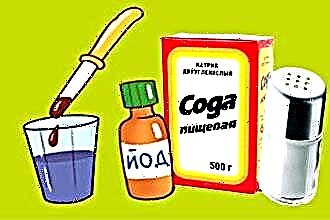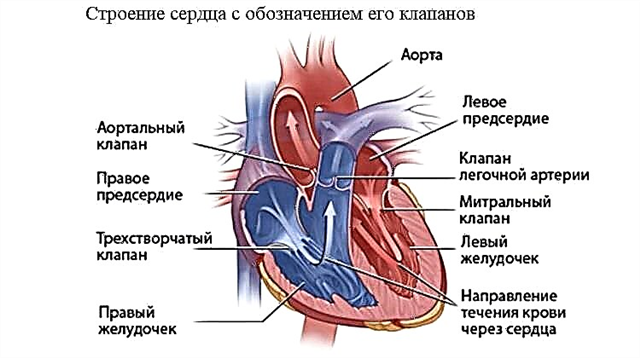Odor from the ears is a symptom that signals the development of an infectious disease, accompanied by inflammation of the mucous membranes in the outer or middle ear. The provocateurs of catarrhal processes are pathogens that penetrate the auditory analyzer by a tubular, hematogenous or tympanic route.
Most often, with the development of ear pathology, additional symptoms are observed, indicating destructive changes in the affected tissues: hyperthermia, headaches, accumulation of exudate in the external auditory canal, hearing loss, itching, etc. Due to the development of pathogenic flora, an unpleasant putrid smell arises in the foci of inflammation. Untimely treatment of ENT disease entails a deterioration in well-being and the appearance of complications.
Etiology

In the absence of pathological processes, the auricle and the external auditory canal do not smell. In rare cases, during hormonal changes in the body, a subtle smell of sulfur comes from the ear, which is due to the functioning of the external secretion glands in the cartilaginous part of the ear canal. Why do ears stink?
The appearance of a smell is often associated with the onset of inflammation, the provocateurs of which can be:
- pharyngitis;
- laryngitis;
- chronic rhinitis;
- tonsillitis;
- adenoids;
- secondary immunodeficiency;
- impaired sulfur secretion.
The appearance of a putrid odor is always due to the presence of purulent inflammation in the tissues of the organ of hearing.
A decrease in the reactivity of the body can be caused not only by hormonal changes, but also by poor hygiene or abuse of hormonal drugs. A decrease in local immunity leads to the active development of pathogenic microbes, viruses or fungi that provoke inflammatory processes in the tissues.
When to see a doctor?

In most cases, unpleasant odor from the ear is not regarded by patients as a reason to seek help from an otolaryngologist. However, experts warn that the occurrence of a symptom always indicates the development of pathological processes in the organ of hearing. Do not postpone a visit to an ENT doctor if the appearance of a specific aroma is accompanied by the following signs:
- severe itching;
- headache;
- malaise;
- tinnitus;
- hearing loss;
- swelling of the auditory canal;
- peeling of the skin in the auricle;
- painful sensations on palpation of the tragus.
Only a competent specialist can determine the type of ENT disease and the further treatment regimen. Self-medication with antibacterial and antifungal agents without an accurate diagnosis can provoke a decrease in the pH level in the auditory canal, which will negatively affect local immunity.
Otitis externa
One of the most common causes of the problem is otitis externa. ENT disease is characterized by the development of catarrhal processes in the soft and cartilaginous tissues of the auricle and the external auditory canal. The causative agents of pathology can be staphylococci, streptococci, Pseudomonas aeruginosa, Proteus, etc. Infection occurs with mechanical damage to the skin, fluid entering the ear, wearing contaminated headphones or hearing aids.
Important! Late treatment of otitis externa leads to inflammation of the ear membrane and the development of myringitis.
When a boil is opened (limited otitis media), an unpleasant odor appears from the ears, which is due to the outflow of purulent exudate. As a rule, abscesses are located deep in the ear canal, so they are not visible on visual inspection. In the case of diffuse otitis media, vesicles filled with fetid exudate are localized not only in the ear canal, but also on the auricle. Their spontaneous opening leads to an aggravation of the unpleasant odor.
Otomycosis
Often, patients come to the otolaryngologist with complaints of odor from the ear, itching, congestion and hearing loss. Symptoms indicate the development of mycotic otitis media (otomycosis), the causative agents of which are yeast-like and molds such as Aspergillus, Candida or Penicillium. The development of a fungal infection can be provoked by:
- ear injuries;
- hypovitaminosis;
- hormonal imbalance;
- trauma to the auditory canal;
- somatic diseases;
- postoperative complications.
In patients with diabetes, otomycosis develops much faster, due to the reduced resistance of the body.
A harbinger of pathological changes in tissues is an unpleasant odor that appears when a serous or purulent exudate is released from the ear canal. At the stage of progression of the pathology, the tympanic membrane is affected, which can lead to the development of mycotic myringitis. Untimely passage of antifungal therapy leads to the formation of perforated holes in the ear membrane, which is fraught with damage to the mucous membrane in the middle ear cavity.
Myringitis

Why does my ear stink? The development of an unpleasant odor is often associated with inflammation in the ear membrane. Destructive changes in the tissues inevitably lead to the evacuation into the ear canal of a blood exudate with a pungent odor. General infections (tonsillitis, influenza), mechanical and chemical trauma to the outer ear, or sepsis can provoke the development of ENT diseases.
With the development of catarrhal processes, bullae (vesicles) filled with exudate are formed on the membrane. Depending on the type of infectious agent, the exudate may have a fishy or putrid odor. During the opening of the bubbles, the contents enter the outer ear, as a result of which the patient feels an unpleasant odor. The following symptoms signal the occurrence of myringitis:
- shooting ear pains;
- bloody discharge;
- hyperemia of the tympanic membrane;
- slight hearing impairment;
- enlargement of the parotid lymph nodes.
Before using ear drops, patients with suspected myringitis should undergo a differential diagnostic examination by an otolaryngologist.
Purulent otitis media
According to experts, a fetid odor from the ears in humans is often caused by the development of purulent inflammation in the middle ear cavity. Ear pathology is characterized by an acute or chronic course of inflammatory processes in the mucous membrane of the tympanic cavity and the Eustachian tube, as well as in the bone structures of the mastoid process. Most often, infectious agents penetrate into the organ of hearing by the tubular method with the development of pathogens in the nasopharynx.
With excessive formation of mucopurulent discharge, infection of the inner ear is not excluded, which is fraught with the development of labyrinthitis.
With the progression of the disease, infiltrates of polymorphonuclear leukocytes, pathogenic bacteria and lymphoid cells appear in the foci of inflammation. Excessive pressure of purulent masses on the ear membrane leads to the formation of perforated holes in it (perforation stage). When the pathological exudate is evacuated into the auditory canal, a putrid odor occurs.
Drug treatment
The smell from the ear in humans occurs exclusively when pathological changes occur in the tissues of the auditory analyzer. To eliminate a symptom, it is necessary to eliminate the root cause of its occurrence. Complex treatment of ear pathologies involves the use of systemic and local drugs with pronounced antiphlogistic, antimicrobial and antimycotic properties.
Within the framework of pharmacotherapy for the treatment of fungal, viral and bacterial infections, the following are used:
 ear drops ("Uniflox", "Garazon", "Anauran") - topical preparations that contribute to the destruction of pathogenic flora in the lesions and relief of pain;
ear drops ("Uniflox", "Garazon", "Anauran") - topical preparations that contribute to the destruction of pathogenic flora in the lesions and relief of pain;- systemic antibiotics (Cefprozil, Amoxicillin, Cefdinir) are antimicrobial agents with a pronounced bacteriostatic effect. Eliminate local manifestations of purulent inflammation in the organ of hearing;
- antifungal agents ("Clotrimazole", "Candibiotic", "Amphotericin") - destroy the cellular structures of mold and yeast-like fungi that provoke inflammatory processes;
- anti-inflammatory drugs ("Betamethasone", "Fenazone", "Dexamethasone") - blockers of the cascade of mediator reactions resulting from the synthesis of histamine, serotonin, etc. Quickly relieve swelling and inflammation in the affected mucous membranes;
- local anesthetic drugs (Xylocaine, Naropin, Ubistezin) - reduce the sensitivity of nerve cells, thereby relieving pain.
If the patient has an unpleasant smell from the ear, this signals the presence of pathological exudate in the external ear canal. To rinse the ear and, accordingly, eliminate the symptom, "Hydrogen peroxide" and "Burov's fluid" can be used, but only in a diluted form. The solutions have a disinfecting effect, which helps to increase local immunity and regression of inflammation.
Timely recognition and elimination of catarrhal processes in the ear can prevent the development of conductive hearing loss, mastoiditis and other severe intracranial complications. Along with drug treatment, experts recommend undergoing physiotherapy aimed at accelerating the regeneration processes in the affected tissues.

 ear drops ("Uniflox", "Garazon", "Anauran") - topical preparations that contribute to the destruction of pathogenic flora in the lesions and relief of pain;
ear drops ("Uniflox", "Garazon", "Anauran") - topical preparations that contribute to the destruction of pathogenic flora in the lesions and relief of pain;

